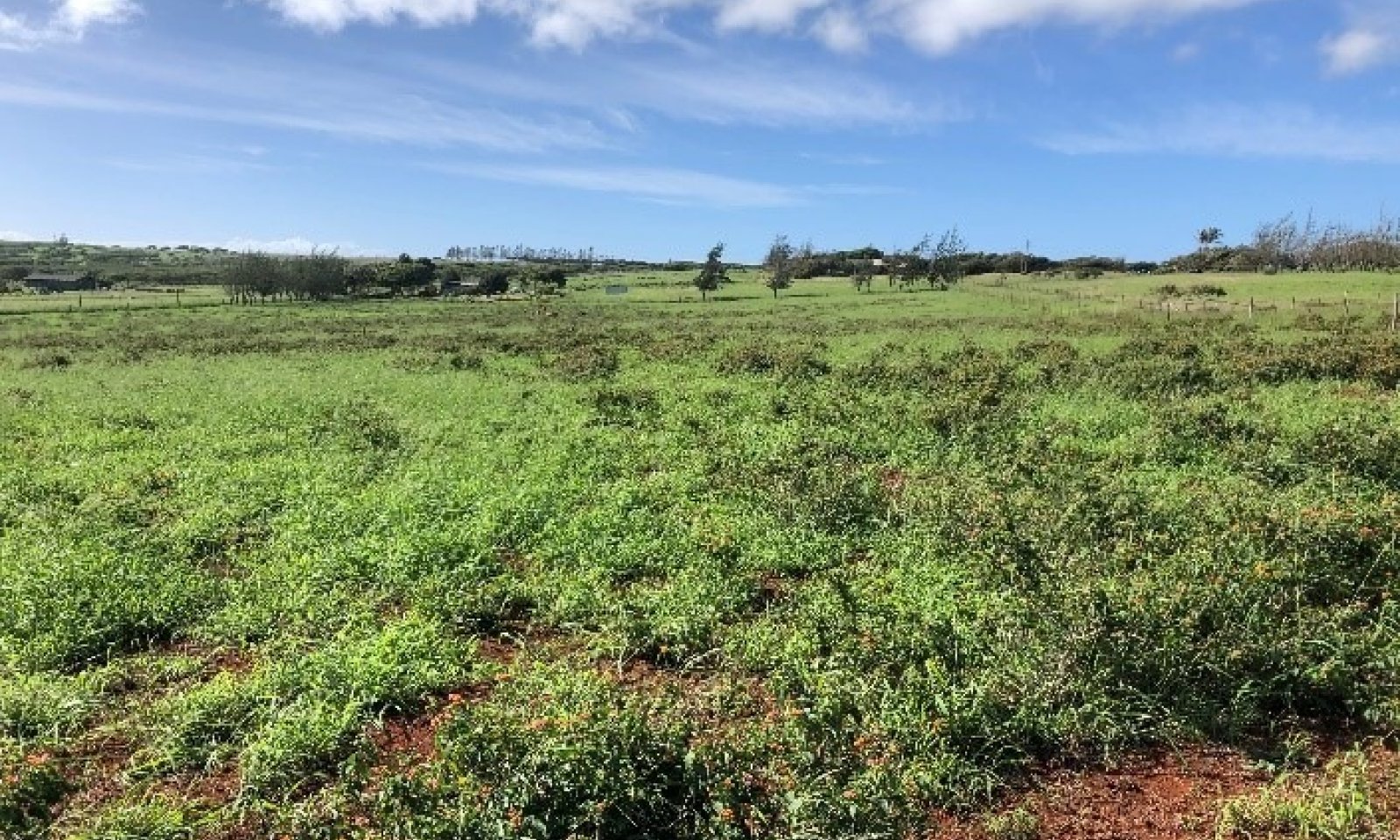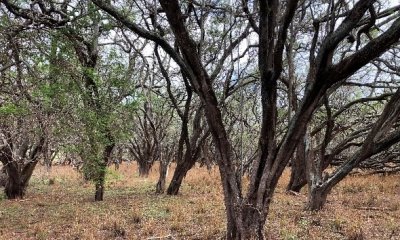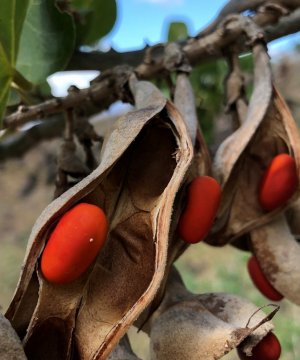
Isohyperthermic Torric Naturalized Grassland Kiawe/buffelgrass (Prosopis pallida/Pennisetum ciliare)
Scenario model
Current ecosystem state
Select a state
Management practices/drivers
Select a transition or restoration pathway
-
Transition T1A
State 1 Reference transitions to State 2 Kiawe-Invaded in the absence of disturbance such as brush management practices or fire.
More details -
Restoration pathway R1A
State 1 can be restored to a facsimile of State 3 Native Savanna. The site must be fenced or animals controlled such that all domestic and feral ungulates are excluded from the site. A firebreak must be created and maintained around the fence line by grazing or mowing. Buffelgrass and other non-native vegetation must be killed, followed by plantings of native trees, shrubs, and vines. Apply additional invasive plant species control as needed. Supplemental irrigation may be necessary in the early stages of restoration.
More details -
Restoration pathway R2A
State 2 Kiawe-Invaded can be restored to State 1 Reference by applying land clearing and brush management. Apply invasive plant species control as needed. Fire will kill kiawe; prescribed burning is typically not done in Hawaii due to the level of risk.
More details -
Transition T3A
State 3 Native Forest transitions to State 1 Reference State when cleared by fire, long-term ungulate disturbance, or mechanical means. Desired forage species are then re-established.
More details -
No transition or restoration pathway between the selected states has been described
Target ecosystem state
Select a state
Description
This state consists of three community phases dominated by introduced grasses and less than 25 percent canopy cover of introduced trees.
Resilience management
In the absence of disturbance such as fire or brush control, this state will transition to State 2 Kiawe-Invaded, in which production and cover of buffelgrass and other forages is reduced. Accumulation of fine fuels under light or no grazing pressure increases the likelihood of wildfire. This can produce an open grassland with little tree overstory but presents a fire threat to developed areas nearby and likelihood of eroded soil entering the nearby ocean.
Submodel
Description
This state consists of one community phase. It occurs in the absence of disturbance such as fire or brush control allowing kiawe to increase in density and stature to a level at which understory production is significantly reduced.
Submodel
Description
This state consists of one community phase. Intact examples of this community no longer exist. This description is compiled from field observations of remnant vegetation, isolated plants on disturbed sites, a similar ecological site on the Island of Hawaii, and historical accounts.
Submodel
Mechanism
State 1 Reference transitions to State 2 Kiawe-Invaded in the absence of disturbance such as brush management practices or fire.
Mechanism
State 1 can be restored to a facsimile of State 3 Native Savanna. The site must be fenced or animals controlled such that all domestic and feral ungulates are excluded from the site. A firebreak must be created and maintained around the fence line by grazing or mowing. Buffelgrass and other non-native vegetation must be killed, followed by plantings of native trees, shrubs, and vines. Apply additional invasive plant species control as needed. Supplemental irrigation may be necessary in the early stages of restoration.
Relevant conservation practices
| Practice | External resources |
|---|---|
|
Fence |
|
|
Firebreak |
|
|
Native Plant Community Restoration and Management |
|
|
Invasive Plant Species Control |
|
|
Invasive Species Pest Management |
Mechanism
State 2 Kiawe-Invaded can be restored to State 1 Reference by applying land clearing and brush management. Apply invasive plant species control as needed. Fire will kill kiawe; prescribed burning is typically not done in Hawaii due to the level of risk.
Relevant conservation practices
| Practice | External resources |
|---|---|
|
Brush Management |
|
|
Land Clearing |
|
|
Invasive Plant Species Control |
Mechanism
State 3 Native Forest transitions to State 1 Reference State when cleared by fire, long-term ungulate disturbance, or mechanical means. Desired forage species are then re-established.
Relevant conservation practices
| Practice | External resources |
|---|---|
|
Brush Management |
|
|
Land Clearing |
|
|
Range Planting |
Model keys
Briefcase
Add ecological sites and Major Land Resource Areas to your briefcase by clicking on the briefcase (![]() ) icon wherever it occurs. Drag and drop items to reorder. Cookies are used to store briefcase items between browsing sessions. Because of this, the number of items that can be added to your briefcase is limited, and briefcase items added on one device and browser cannot be accessed from another device or browser. Users who do not wish to place cookies on their devices should not use the briefcase tool. Briefcase cookies serve no other purpose than described here and are deleted whenever browsing history is cleared.
) icon wherever it occurs. Drag and drop items to reorder. Cookies are used to store briefcase items between browsing sessions. Because of this, the number of items that can be added to your briefcase is limited, and briefcase items added on one device and browser cannot be accessed from another device or browser. Users who do not wish to place cookies on their devices should not use the briefcase tool. Briefcase cookies serve no other purpose than described here and are deleted whenever browsing history is cleared.
Ecological sites
Major Land Resource Areas
The Ecosystem Dynamics Interpretive Tool is an information system framework developed by the USDA-ARS Jornada Experimental Range, USDA Natural Resources Conservation Service, and New Mexico State University.




